Rock-Cut Tomb Of Pennut, Viceroy Of Nubia Under Reign Of Ramses VI
A. Sutherland - AncientPages.com - Many ancient monuments have been rescued from rising waters of powerful Nile River.
One of them is rock cut 'Tomb of Pennut', which is situated in Aneiba (Aniba), Lower Nubia, approximately 140 miles south of Aswan, in the south of Egypt.
In the 1970s some of the best and most colourful of the scenes were stolen. Tomb of Pennut. Lake Nasser, Egypt. Image credit: Dennis Jarvis - CC BY-SA 2.0 DEED
Today, Aneiba (or Mi’am) does not exist. It was flooded by the Lake Nasser but in times of Ramses VI, it was an important administrative center of Lower Nubia and the seat of governor and higher officials. The city's Horus temple dates back to the Middle Kingdom. The cult of Horus of Mi'am was not limited to his city but like all other Horus it was widespread throughout Nubia.
The current location of the tomb of Pennut is on the shore of Lake Nasser, on the site of the new Amada.
Pennut, Viceroy of Kush was a prominent figure also known as “King’s Son of Kush”. This prominent Egyptian official lived at the time of Ramses VI (1143-1136 BC) and was supervisor of the province of Aneiba, the seat of governor and higher officials.
Egyptologist Professor George Steindorff (1861-1951) found the tomb during the excavations at the second raising of the Aswan Dam.
While studying the tomb, he found that Pennut served under Ramses VI, the fifth ruler of the Twentieth Dynasty of Egypt. His office was “Deputy of Wawat”, Chief of the Quarry Service” and Steward of Horus, Lord of Mi’am” and he was an important Nubian figure.
See also:
Taharqa – The Most Powerful Of The Black Pharaohs
Ancient Great City Of Napata In The Kingdom Of Kush
Two of his relatives also held high positions of “Treasurer of the Lord of Two Lands of Mi’am” and another was “Scribe of the white House and Mayor of M’am”.
However, their tombs have never been discovered.
The tomb of Pennut, a small, well-preserved structure with the entrance leading into a chamber 6.5 m (21ft) wide by 2.8 m (9ft) deep).

King's Son of Kush depicted in the tomb of Pennut in Aniba. Dates to the 20th dynasty. Ramesses VI. From Lepsius Denkmaler Abt 3, Band 7, Page 230
The tomb of Pennut (with a small offering chapel and a niche at the rear) was found decorated with the cartouches of the Pharaoh Ramses VI, carved on the walls of the chapel and many reliefs depicting how the Viceroy and members of his family used to adore various gods in front of other officials, and other important events and personalities from the Viceroy’s life.
One relief in his tomb shows Pennut himself receiving the gifts from Ramses VI form of two silver vessels.
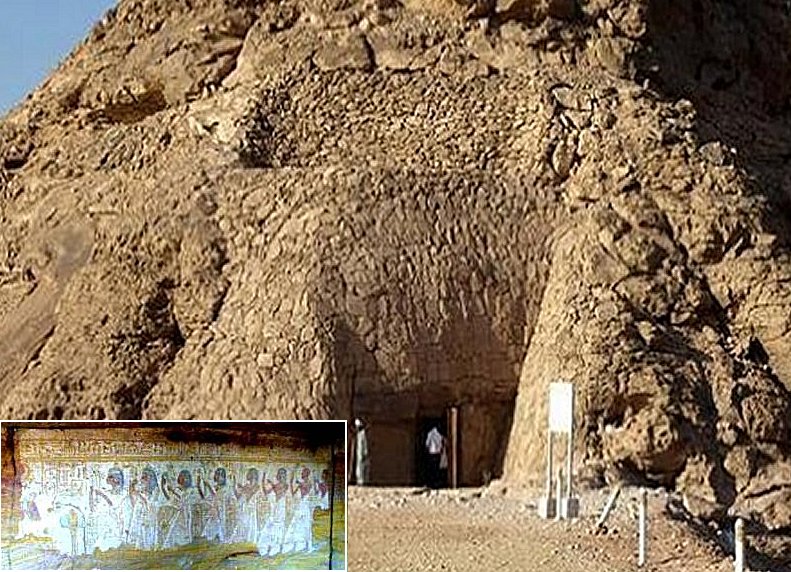
The tomb of Pennut was rescued by UNESCO's project, it presently is located opposite Qasr Ibrim, some 25 miles away from its original site.
There are also scenes associated with the afterlife. The tomb has several well-preserved and informative inscriptions.
Although very old, Pennut’s tomb is not only beautiful but also famous for its inscriptions authored by Pennut. The inscriptions give us a picture of the Nubian official’s life including records of the boundaries, offerings and presents given to Ramses VI.
In the tomb, there is also text recording Pennut’s donation of a statue of Ramses VI to the temple of Horus in Aneiba and funding made by him on behalf of agricultural lands.
Written by – A. Sutherland - AncientPages.com Senior Staff Writer
Copyright © AncientPages.com All rights reserved. This material may not be published, broadcast, rewritten or redistributed in whole or part without the express written permission of AncientPages.com
Expand for referencesReferences:
Török L. The Kingdom of Kush
N. D. Harkless, Nubian Pharaphs and Meroitic Kings
Altenmüller H. Studien zur Altägyptischen Kultur, Volym 31
More From Ancient Pages
-
 Strange Engraving Made By Knights Templar In French Village – It Doesn’t Make Sense Or Does It? – Part 2
Ancient Mysteries | Oct 9, 2019
Strange Engraving Made By Knights Templar In French Village – It Doesn’t Make Sense Or Does It? – Part 2
Ancient Mysteries | Oct 9, 2019 -
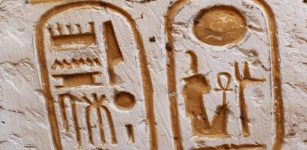 Palace Located Inside Ancient Temple Of Ramses II Discovered In Abydos, Egypt
Archaeology | Apr 1, 2019
Palace Located Inside Ancient Temple Of Ramses II Discovered In Abydos, Egypt
Archaeology | Apr 1, 2019 -
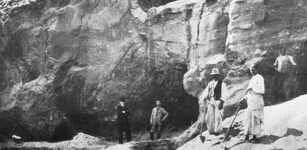 Neanderthals Decorated Their Caves With Rocks 130,000 Years Ago – Find At Krapina Site Reveals
Archaeology | Jan 19, 2017
Neanderthals Decorated Their Caves With Rocks 130,000 Years Ago – Find At Krapina Site Reveals
Archaeology | Jan 19, 2017 -
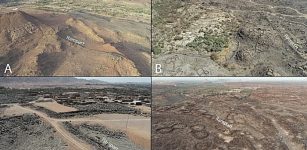 Vast Fortification Enclosing Walled Oasis Dating Back 4,000 years In North-Western Arabia – Unearthed
Archaeology | Jan 10, 2024
Vast Fortification Enclosing Walled Oasis Dating Back 4,000 years In North-Western Arabia – Unearthed
Archaeology | Jan 10, 2024 -
 Clan MacGregor: Fearless, Lawless And Persecuted Clan Of The Highlands
Featured Stories | Jul 9, 2018
Clan MacGregor: Fearless, Lawless And Persecuted Clan Of The Highlands
Featured Stories | Jul 9, 2018 -
 Scientists Found A Link Between Ancient Human Teeth And An Extinct Reptile
Archaeology | Jan 10, 2022
Scientists Found A Link Between Ancient Human Teeth And An Extinct Reptile
Archaeology | Jan 10, 2022 -
 Puzzling Ancient Artifacts Found In Canadian Mountains Defy Explanation – Scientists Say
Featured Stories | Aug 27, 2024
Puzzling Ancient Artifacts Found In Canadian Mountains Defy Explanation – Scientists Say
Featured Stories | Aug 27, 2024 -
 Ten Ancient Jugs May Reveal The Location Of The Biblical Tabernacle
Archaeology | Jul 21, 2017
Ten Ancient Jugs May Reveal The Location Of The Biblical Tabernacle
Archaeology | Jul 21, 2017 -
 Has AI Found An Unknown Human Ancestor?
Archaeology | Jan 17, 2019
Has AI Found An Unknown Human Ancestor?
Archaeology | Jan 17, 2019 -
 How Did Indus Civilization Manage To Resist Climate Change?
Archaeology | Feb 22, 2017
How Did Indus Civilization Manage To Resist Climate Change?
Archaeology | Feb 22, 2017 -
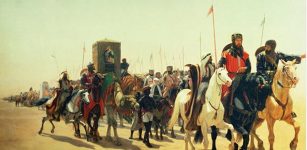 On This Day In History: Richard The Lionheart Arrives To The Holy Land – On June 8, 1191
News | Jun 8, 2016
On This Day In History: Richard The Lionheart Arrives To The Holy Land – On June 8, 1191
News | Jun 8, 2016 -
 Cambridge Supports Nigeria’s Claim For Return Of Benin Artefacts From University Collections
Archaeology | Aug 2, 2022
Cambridge Supports Nigeria’s Claim For Return Of Benin Artefacts From University Collections
Archaeology | Aug 2, 2022 -
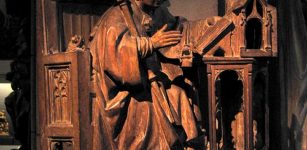 Restoration Of Valuable 4th Century Silk Tunics Attributed To St. Ambrose Takes Place In Milan
Artifacts | Apr 12, 2017
Restoration Of Valuable 4th Century Silk Tunics Attributed To St. Ambrose Takes Place In Milan
Artifacts | Apr 12, 2017 -
 Utukku: Sumerian Spirit From The Underground That Obeyed The Will Of God Anu
Featured Stories | Jun 17, 2016
Utukku: Sumerian Spirit From The Underground That Obeyed The Will Of God Anu
Featured Stories | Jun 17, 2016 -
 Ancient Mexicans’ Precise Solar Observations Fed Millions – Remarkable Farming Calendar Invented
Archaeoastronomy | Dec 12, 2022
Ancient Mexicans’ Precise Solar Observations Fed Millions – Remarkable Farming Calendar Invented
Archaeoastronomy | Dec 12, 2022 -
 Unusual Ancient Spider Pipes Of Tennessee – Were They Used By Shamans To Enter The Spirit World?
Ancient Mysteries | Feb 18, 2018
Unusual Ancient Spider Pipes Of Tennessee – Were They Used By Shamans To Enter The Spirit World?
Ancient Mysteries | Feb 18, 2018 -
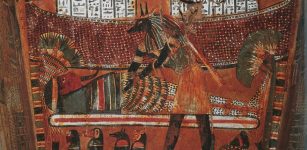 Immortal God Anubis: Lord Of The Sacred Land, Jackal God Of Mummification
Egyptian Mythology | Sep 19, 2016
Immortal God Anubis: Lord Of The Sacred Land, Jackal God Of Mummification
Egyptian Mythology | Sep 19, 2016 -
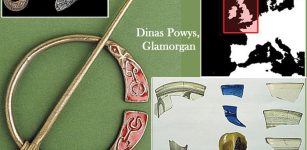 Dinas Powys: Late ‘Antique Hillfort Phenomenon’ In Post-Roman Western Britain
Places | Feb 23, 2024
Dinas Powys: Late ‘Antique Hillfort Phenomenon’ In Post-Roman Western Britain
Places | Feb 23, 2024 -
 Mysterious Mustatils- Giant 7,000-Year-Old Stone Monuments In Saudi Arabia Baffle Scientists
Archaeology | Aug 19, 2020
Mysterious Mustatils- Giant 7,000-Year-Old Stone Monuments In Saudi Arabia Baffle Scientists
Archaeology | Aug 19, 2020 -
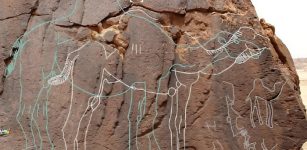 Remarkable Neolithic Life-Sized Camel Engravings Discovered In The Nefud Desert
Archaeology | Oct 5, 2023
Remarkable Neolithic Life-Sized Camel Engravings Discovered In The Nefud Desert
Archaeology | Oct 5, 2023


